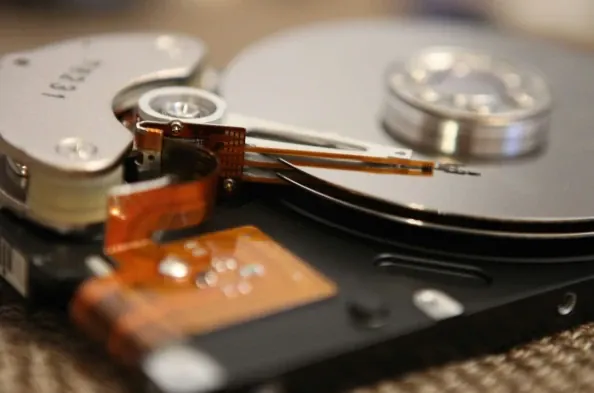Selling or recycling old electronics has become increasingly common, but many people may not realize that simply deleting files or performing a factory reset is not enough to ensure data security. Sensitive information like passwords, documents, and bank details can still be retrieved with specialized tools. Statistics indicate that 90% of second-hand laptops, hard drives, and memory cards still contain recoverable data. This highlights the necessity for more thorough data-wiping methods. Below are steps anyone can take to securely erase their data before recycling or selling their devices.
1. Information Deletion
Personal users should begin by using data-erasing software to securely remove hard drive data before selling or recycling a device. This ensures that sensitive information is not easily recoverable by the next user. Traditional methods may not work for solid-state drives (SSDs) due to their data storage methods, which include using flash memory and wear-leveling algorithms. These algorithms prevent direct overwriting, so enabling full-disk encryption with software like BitLocker on Windows or FileVault on Mac is an effective solution. Once encrypted, perform a reset to make the data unreadable.
Additionally, users with Android phones can utilize secure data-erasing apps like Shreddit. iPhones automatically encrypt data by default, making a factory reset the most effective method to wipe information clean. Engaging full-disk encryption or using these specialized apps helps ensure that residual traces of data are completely obliterated, preventing unauthorized access or data recovery post-disposal.
2. Advanced Methods for Businesses
Businesses handling sensitive data must adhere to strict data protection regulations, given the high stakes involved. To comply, companies can employ certified data-erasing tools that meet recognized standards, such as the United States National Institute of Standards and Technology’s guidelines for media sanitization, or the US Institute of Electrical and Electronics Engineers’ standard for storage sanitization. These guidelines are globally acknowledged, adding an extra layer of credibility and security for businesses.
Many organizations also opt for third-party data destruction services. These certified services not only help verify compliance with regulatory standards but also enhance overall data security. Third-party providers typically offer advanced data-erasing and physical destruction options, ensuring that all sensitive information is irreversibly removed from storage devices. Utilizing these services ensures businesses can confidently dispose of their data without the risk of residual recovery.
3. Physical Eradication
For extremely sensitive data, physically destroying the storage medium is the most secure method available. Common techniques include degaussing, which uses a strong magnetic field to disrupt the stored data, as well as shredding, disintegration, melting, and drilling. These methods ensure that data cannot be recovered, even with the most advanced forensic tools.
Physical destruction is particularly applicable for outdated or highly confidential storage devices. However, these methods should be handled by professionals to avoid hazardous consequences. An additional consideration is that physically destroyed devices cannot be resold or reused and must be taken to a waste recovery center. There, rare earth metal components can be safely extracted and recycled, promoting environmental responsibility alongside data security.
4. Certified Recycling Services
Users should seek out reputable e-waste recyclers who adhere to strict data destruction protocols to ensure that personal information does not fall into the wrong hands. Certifications such as R2, e-Stewards, or AS/NZS 5377 demonstrate compliance with industry security standards, providing added assurance.
To locate a certified recycler, utilize resources like the online database managed by the Sustainable Electronics Recycling International (SERI), which lists R2-certified facilities worldwide. Collaborating with certified recyclers guarantees that devices are processed with the highest levels of security and environmental responsibility. This way, personal and corporate data remains protected, and electronics recycling is conducted sustainably.
5. Secure Selling and Donating Procedures
Before selling or donating devices, it is crucial to perform a comprehensive data wipe. Simply resetting a device may not completely erase stored information. Users must ensure that all personal data, especially information linked to cloud accounts, is fully removed to prevent unauthorized access.
In addition to performing a data wipe, remove all linked accounts and perform additional security checks. Advanced users can repeat the secure erasing process multiple times to further decrease the likelihood of data recovery. Taking these careful measures not only protects personal information but also ensures that the next user starts with a clean slate.
6. Legal and Regulatory Concerns for Businesses
Businesses must follow legal and regulatory requirements for data protection when recycling old devices. Selling or recycling old electronics has gained popularity, but many people don’t realize that simply deleting files or performing a factory reset isn’t enough to guarantee data security. Sensitive information like passwords, documents, and bank details can still be retrieved with specialized tools. Research shows that 90% of used laptops, hard drives, and memory cards still contain recoverable data. This clearly shows the need for more thorough methods of data wiping. To ensure your data is truly gone before recycling or selling your devices, it’s crucial to take specific steps. Firstly, consider using software designed for data erasure, which can overwrite every sector of your storage device multiple times, making it nearly impossible to recover any data. Additionally, physically destroying the hard drive or memory card is another effective method. By taking these precautions, you can ensure your sensitive information remains secure, providing peace of mind as you part with your old electronics.






